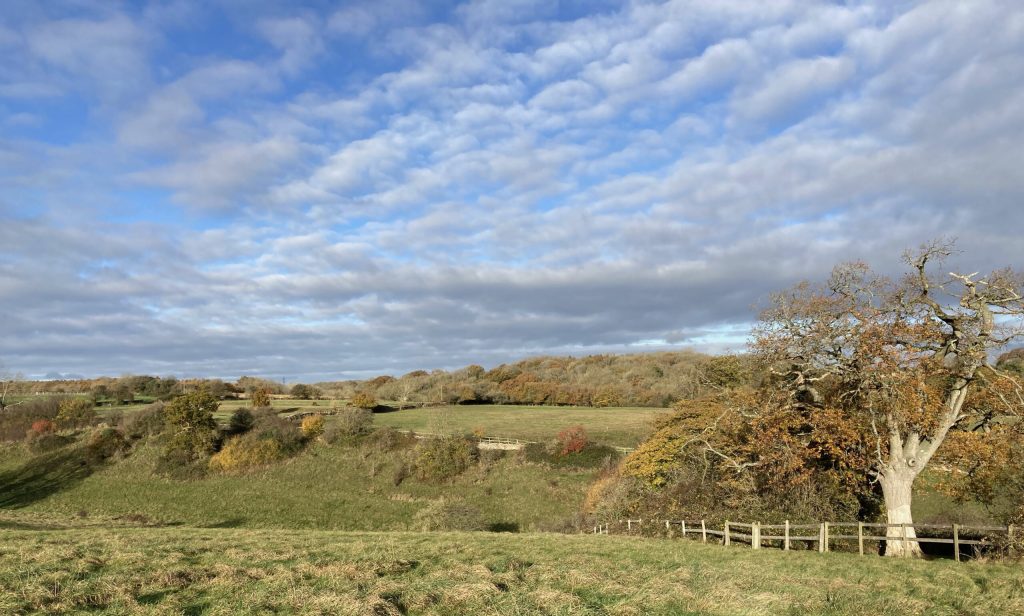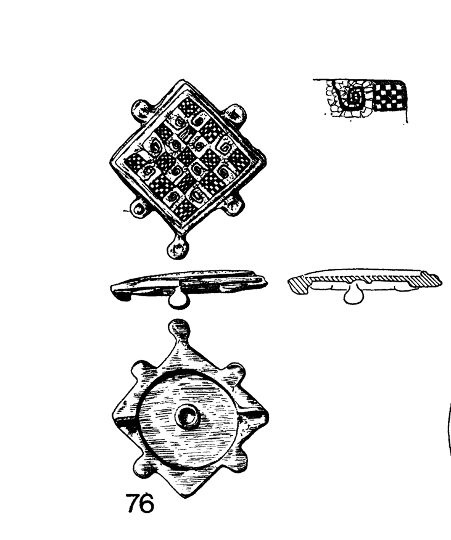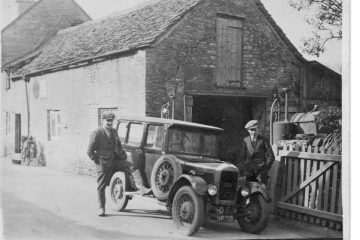The Shrine of Apollo in the post-Roman era
Where the Fosse Way crosses the Broadmead Brook, beneath the tranquil valley at Nettleton Shrub lurks a secret dark and ancient. Who would guess this now peaceful conservation area was witness to successive waves of violent assault in the post-Roman era?
Two teams of Archaeologists excavated the site. The first was led by Priestley in 1956 and the second by Wedlake in 1971. What follows here is a summary of Wedlake’s (1982) extrapolation of their combined findings.

From shrine to homestead
In the decades following the abandonment of worship at the Temple of Apollo, the building fell into disrepair. At around 370 AD, the shrine was adapted for use as a homestead. Its people were industrious, converting buildings for pewter casting, and bronze- and iron-smelting, as evidenced by the stone moulds, furnace, crucibles, wrought-iron and iron slag found during excavations between 1956-71.
Towards the end of the fourth century, conditions deteriorated to a level of squalor. Dogs, cattle, goats, and poultry shared the building with the homesteaders, burying the original mosaic tiles beneath dung, straw and food remains. So much the better for us, as this preserved the Roman tessellation.
Looting and piracy

Without Roman protection, Britain was on its own. The settlement was torched and raided twice. The looters left late fourth-century Roman coins strewn around, which the excavation team picked from the charred remains. A bronze millefiori brooch also found in the remains indicates the raiders were Irish pirates, who came by way of the Bristol Channel. Some may have settled down with the existing inhabitants. These settlers buried their dead in stone-lined graves orientated east-west in wooden coffins, with no grave goods, suggestive of Christian burial.
The settlement came to an abrupt end just after the turn of the fifth century.
Grisly remains
The excavation team made their most gruesome discovery in the latest layer of remains. Here, the skeletons of at least 14 men and women, the majority of whom were less than 40 years old, lay where they had fallen. Sword slashes to the bones, including fragments of skull, and axis and atlas vertebrae suggesting decapitation, testify the inhabitants were massacred.

Return to pasture
Apart from a farmstead built during the medieval period, when the Roman buildings were used as cattle byres or sheep pens, and lime-kiln burners were employed, the temple at Nettleton Shrub was never occupied again.

If you enjoyed this blog, why not walk the Apollo Mission to visit the site.
You can also read more of our local history here.
References
Wedlake, W J (1982) Reports of the Research Committee of the Society of Antiquaries of London No.XL The Excavation of the Shrine of Apollo at Nettleton, Wiltshire, 1956-1971. The Society of Antiquaries of London, distributed by Thames and Hudson Ltd


2 Comments
Ancient Burtons: Neolithic, Roman and Saxon remains in the area - Burton in Wiltshire · 04/20/2022 at 2:41 pm
[…] the fourth century the area was raided, possibly by Irish pirates via the Bristol Channel. Some may have settled here as indicated by burial sites of stone lined […]
Apollo Mission - Burton in Wiltshire · 05/23/2022 at 11:57 am
[…] read more about the Temple of Apollo […]